Encyclopedia of the FIFA World Cup
Encyclopedia of the FIFA World Cup
Tom Dunmore
with Andrew Donaldson
ROWMAN & LITTLEFIELD
Lanham Boulder New York London
Published by Rowman & Littlefield
4501 Forbes Boulevard, Suite 200, Lanham, Maryland 20706
www.rowman.com
Unit A, Whitacre Mews, 26-34 Stannary Street, London SE11 4AB
Copyright 2015 by Rowman & Littlefield
All rights reserved . No part of this book may be reproduced in any form or by any electronic or mechanical means, including information storage and retrieval systems, without written permission from the publisher, except by a reviewer who may quote passages in a review.
British Library Cataloguing in Publication Information Available
Library of Congress Cataloging-in-Publication Data
Dunmore, Tom.
Encyclopedia of the FIFA World Cup / Tom Dunmore with Andrew Donaldson.
pages cm
Includes bibliographical references.
ISBN 978-0-8108-8742-8 (cloth : alk. paper) ISBN 978-0-8108-8743-5 (electronic) 1. World Cup (Soccer)Encyclopedias. 2. World Cup (Soccer)HistoryChronology. 3. Fdration internationale de football association. I. Donaldson, Andrew. II. Title.
GV943.49.D86 2015
796.334'668dc23
2014000966
 The paper used in this publication meets the minimum requirements of American National Standard for Information SciencesPermanence of Paper for Printed Library Materials, ANSI/NISO Z39.48-1992.
The paper used in this publication meets the minimum requirements of American National Standard for Information SciencesPermanence of Paper for Printed Library Materials, ANSI/NISO Z39.48-1992.
Printed in the United States of America
Chronology of the World Cup
190422 May: The foundation of world soccers governing body, the Fdration Internationale de Football Association (FIFA), takes place in Paris, France. Robert Gurin is elected as the first president of FIFA.
1930 1330 July: The first FIFA World Cup takes place in Uruguay. Thirteen nations compete, including seven from South America, four from Europe and two from North America. It is won by the host nation Uruguay, who defeats Argentina 42 in the final. The Uruguayans are awarded the Jules Rimet Trophy, named after the FIFA president. The United States takes third place and Yugoslavia fourth. Guillermo Stbile scores eight goals to win the Golden Shoe as the tournaments top scorer.
1934 27 May10 June: The second FIFA World Cup is held in Italy. Defending champion Uruguay refuses to travel to Europe for the competition. Twelve European nations take part, along with two South American teams, one North American team and the first team from Africa to compete, Egypt. In the final, the host nation defeats Czechoslovakia 21 after extra time. Germany finishes in third and Austria fourth. Oldich Nejedl of Czechoslovakia is the Golden Shoe winner, scorer of a competition-leading five goals.
1938 419 June: In France, 15 teams play in the third World Cup: 12 from Europe and one each from Asia, North and Central America and South America. Italy wins the third FIFA World Cup, beating Hungary 42 in the final. Brazil wins the third-place play-off 42 over Sweden. Brazils Lenidas is the Golden Shoe winner with seven goals.
1950 24 June16 July: After a 12-year hiatus due to World War II, the FIFA World Cup resumes play and takes place outside Europe for the first time since 1930, in Brazil. Thirteen teams compete, with six from Europe, five from South America and two from North and Central America. Uruguay wins the decisive final round-robin game against Brazil to become a world champion for the second time, with the host nation finishing second, Sweden third and Spain fourth. Ademir of Brazil is the Golden Shoe winner, scoring eight goals.
1954 16 June4 July: The World Cup returns to Europe, hosted by Switzerland. Twelve teams from Europe, two from South America and one each from Asia and North and Central America comprise the 16 nations taking part. West Germany claims the trophy, beating Hungary 32 in the final. Austria takes third place and Uruguay fourth. The total of 140 goals scored remains the highest number scored in a World Cup on a per-game basis. Hungarian Sndor Kocsis tallied 11 of those goals to claim the Golden Shoe.
1958 8 June29 June: Sixteen teams participate in the sixth World Cup, held in Sweden. Twelve of those countries are European, three South American and one each from North and Central America. Brazil wins a first World Cup title, defeating the host nation, Sweden, 52 in the final. France takes third place and Germany fourth. Frances Just Fontaine wins the Golden Shoe with 13 goals in the competition, a record haul for a single tournament that still holds today.
196230 May17 June: The World Cup heads to South America for the second time. Sixteen teams compete: ten from Europe, five from South America and one from North and Central America. Host nation Chile finishes in third place, as Brazil claims its second World Cup title, beating Czechoslovakia 31 in the final. Yugoslavia finishes fourth. The Golden Shoe is claimed jointly by five players, all with four goals: Hungarys Flrin Albert, the Soviet Unions Valentin Ivanov, the Brazilian pair of Garrincha and Vava, and Yugoslavias Draan Jerkovi.
196611 July30 July: The World Cup is hosted by England for the first time. Sixteen teams take part, with European nations comprising ten of the contenders, South America four and one each from Asia and North and Central America. England wins the World Cup for the first time, beating Germany 42 in the final at Wembley Stadium. Portugal wins the third-place match 21 over the Soviet Union. Eusbios nine goals for Portugal give him the Golden Shoe.
197031 May21 June: In Mexico, Brazil wins a third World Cup title and was thus allowed to keep the Jules Rimet Trophy forever as a result. Ten European teams, three South American teams, two North and Central American teams and one African team take part. The Brazilians, led by Pel, defeat Italy 41 in the final. West Germany finishes in third place and Uruguay fourth. Red and yellow cards are used for the first time in the World Cup. The Golden Shoe is claimed by Gerd Mller of West Germany, with 10 goals in the competition.
1974 13 June7 July: In the year that Brazilian Joo Havelange is elected as the seventh president of FIFA, West Germany wins the World Cup on home soil, beating the Netherlands in the final 21. Poland wins the third-place play-off over Brazil 10. The field of 16 teams is comprised of nine European nations, four South American nations and one representative each from Asia, Africa and North and Central America. Polands Grzegorz Lato wins the Golden Shoe with seven goals.
19781 June25 June: Argentina hosts the World Cup and wins it for the first time, defeating the Netherlands 31 in the final after extra time. Brazil wins the third-place play-off 21 over Italy. Sixteen teams take part, with five continents represented for the first time: ten nations from Europe, three from South America and one each from Africa, Asia and North and Central America. With six goals, Argentinas Mario Kempes claims the Golden Shoe award.
1982 13 June11 July: The World Cup is expanded to 24 teams, with fourteen European countries, four South American countries, two African countries, two North and Central American countries and one Asian country making up the field in Spain. Italy takes a third world championship, fired by six goals from Golden Shoe winner Paolo Rossi. The Italians defeat West Germany in the final, 31, while Poland finishes in third place and France fourth.
198631 May29 June: Mexico hosts the World Cup for the second time, with Diego Maradonas Argentina defeating West Germany 32 in the final after extra time to win a second world championship. France beats Belgium 42 in the third-place play-off. Twenty-four teams participate: fourteen from Europe, four from South America and two each from Africa, Asia and North and Central America. Englands Gary Lineker earns the Golden Shoe award for his six goals in the competition.
Next page
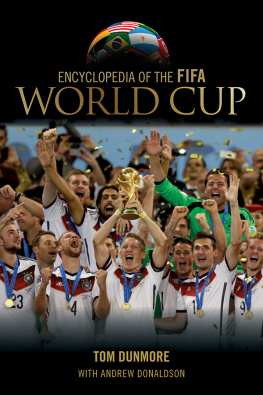

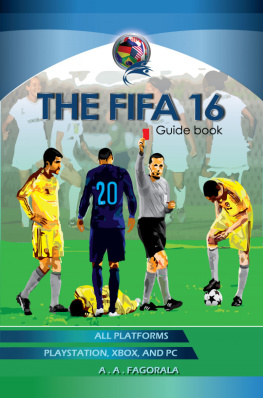

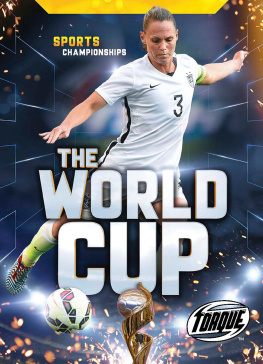
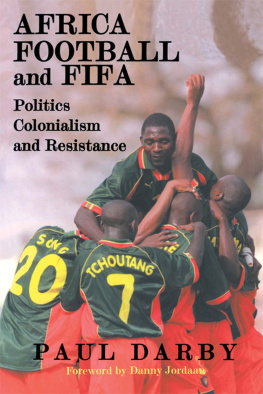
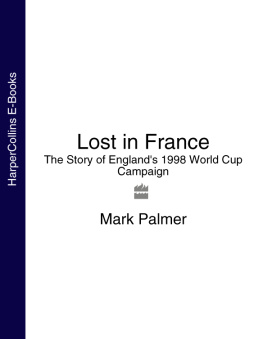

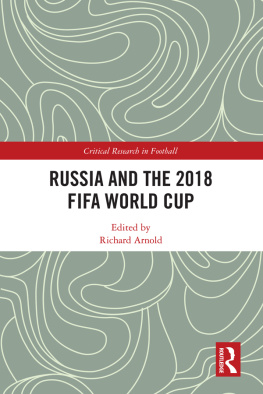
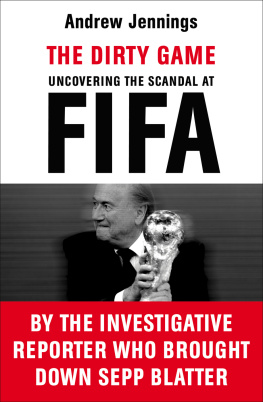

 The paper used in this publication meets the minimum requirements of American National Standard for Information SciencesPermanence of Paper for Printed Library Materials, ANSI/NISO Z39.48-1992.
The paper used in this publication meets the minimum requirements of American National Standard for Information SciencesPermanence of Paper for Printed Library Materials, ANSI/NISO Z39.48-1992.